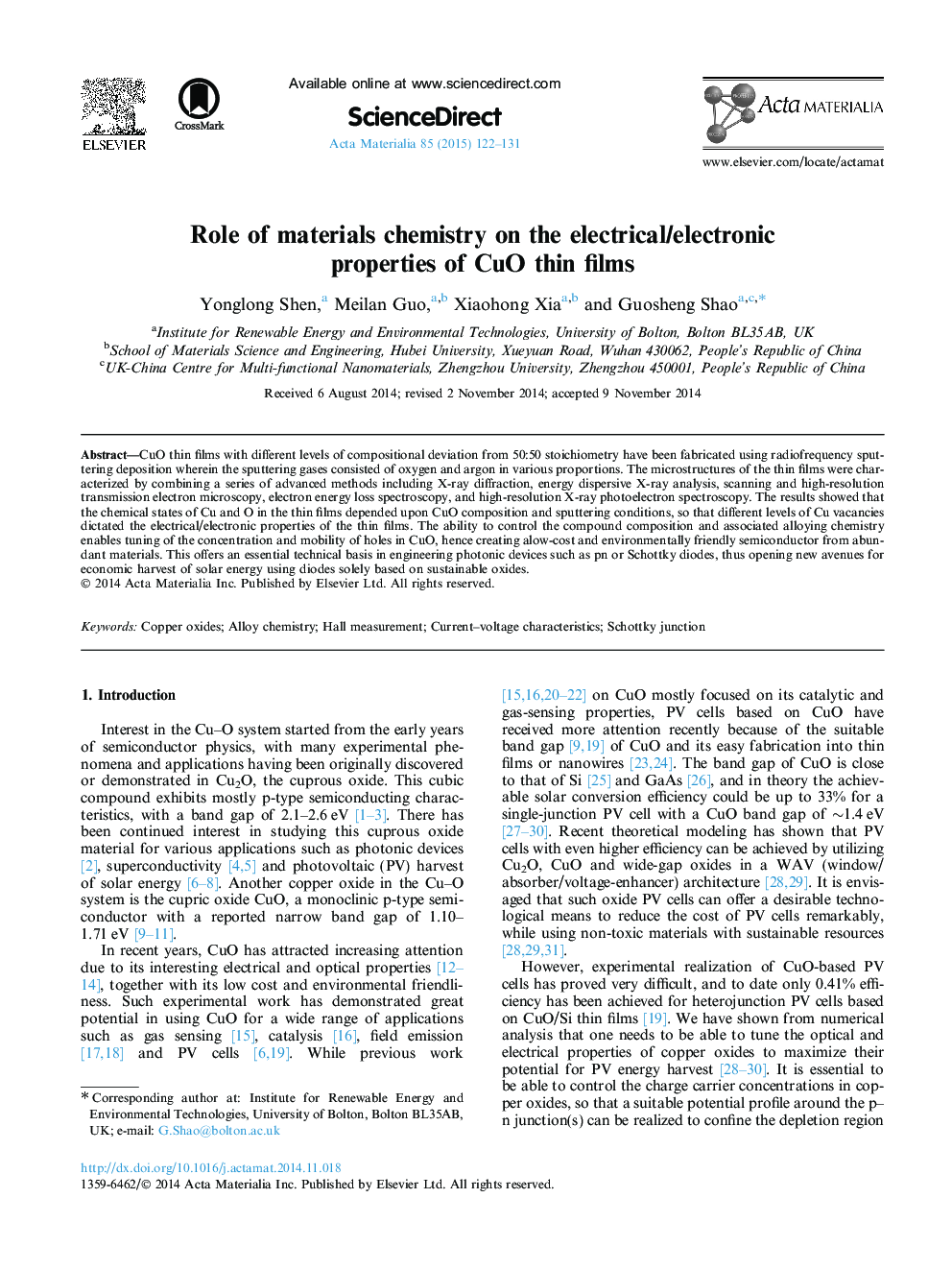| Article ID | Journal | Published Year | Pages | File Type |
|---|---|---|---|---|
| 7880768 | Acta Materialia | 2015 | 10 Pages |
Abstract
CuO thin films with different levels of compositional deviation from 50:50 stoichiometry have been fabricated using radiofrequency sputtering deposition wherein the sputtering gases consisted of oxygen and argon in various proportions. The microstructures of the thin films were characterized by combining a series of advanced methods including X-ray diffraction, energy dispersive X-ray analysis, scanning and high-resolution transmission electron microscopy, electron energy loss spectroscopy, and high-resolution X-ray photoelectron spectroscopy. The results showed that the chemical states of Cu and O in the thin films depended upon CuO composition and sputtering conditions, so that different levels of Cu vacancies dictated the electrical/electronic properties of the thin films. The ability to control the compound composition and associated alloying chemistry enables tuning of the concentration and mobility of holes in CuO, hence creating alow-cost and environmentally friendly semiconductor from abundant materials. This offers an essential technical basis in engineering photonic devices such as pn or Schottky diodes, thus opening new avenues for economic harvest of solar energy using diodes solely based on sustainable oxides.
Related Topics
Physical Sciences and Engineering
Materials Science
Ceramics and Composites
Authors
Yonglong Shen, Meilan Guo, Xiaohong Xia, Guosheng Shao,
